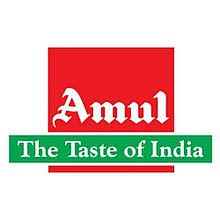Management > General Management > Forms of Business Organizations > Types of Cooperative Societies
The cooperative societies are classified on the basis of the nature of their operations. The types of cooperative societies are as follows:
Consumer’s Cooperative Societies:

They are the oldest form of cooperatives. The consumer cooperative societies are formed to protect the interests of consumers. The members comprise of consumers of a particular area desirous of obtaining good quality products and daily necessary commodities at reasonable prices. The aim of such societies is not to maximize the profit but to provide services to the consumers. The society aims at eliminating middlemen to achieve economy in operations. It purchases goods in bulk directly from the wholesalers and sells goods to the members, thereby eliminating the middlemen. They also ensure a steady supply of goods to members. Profits, if any, are distributed on the basis of either their capital contributions to the society in the form of a dividend. There are Primary societies at the local level, Central or wholesale societies at the district level, State Consumer Co-operative Federation at the State level and National Co-operative Consumer Federation at the National level.
Sahakari Bhandar one of the largest chain of consumer cooperative society stores in India.
Producer’s Cooperative Societies:

These societies are set up to protect the interest of small producers and artisans. The members comprise of producers (farmers, land owners, fishermen, milk producers, etc.) desirous of procuring inputs (raw materials, components, tools, and equipment) for production of goods to meet the demands of consumers and sell their output (finished goods). The society aims to fight against the big capitalists and enhance the bargaining power of the small producers. Profits among the members are generally distributed on the basis of their contributions to the total pool of goods produced or sold by the society. Such societies perform several activities like procuring, processing, marketing, and distributing their own products. This helps in lower costs and strains in each area with a mutual benefit to each producer. AMUL started as milk producers cooperative society.
Marketing Cooperative Societies:

Such societies are established to help small producers in selling their products and ensuring a steady market for their output. The members consist of producers who wish to obtain reasonable prices for their output. Their aim is to protect producers from being exploited by the middlemen. The society aims to eliminate middlemen and improve the competitive position of its members by securing a favourable market for the products. It pools the output of individual members and performs marketing functions like transportation, warehousing, packaging, advertising, etc., to sell the output at the best possible price. The sale proceeds are distributed among the members according to their contribution to the pool. They also provide credit, storage facilities, information about market price, demand and supply, etc. Profits are distributed according to each member’s contribution to the pool of output in the form of a dividend. Marketing Co-operatives are especially suitable for the marketing of agricultural products. The National Agricultural Cooperative Marketing Federation (NAFED) is an example of a marketing cooperative in India.
Farmer’s Cooperative Societies:

These are voluntary associations of small farmers who join together to obtain the economies of large scale farming. Due to financial constraint and smaller land holding, such farmers are no able to use modern tools, machinery, and methods of agriculture. In the case of co-operative farming societies, land holdings of members are consolidated, modern methods of cultivation adopted and good quality of seeds and fertilizers are used. Since the purchase of seeds and fertilizers and the hiring of equipment is done in a centralized and bulk manner, the costs are lower. The aim of such societies is to gain the benefits of large scale farming and increase productivity. This helps not only in improving the yield and returns to the farmers but also solves the problems associated with the farming on fragmented landholdings.
Credit Cooperative Societies:

Credit cooperative societies are established for providing easy credit on reasonable terms to the members. The members comprise of persons who seek financial help in the form of loans. The formalities are much simpler when compared to availing of a bank loan. Credit cooperatives are found in both urban and rural areas. The aim of such societies is to protect the members from the exploitation of lenders who charge high rates of interest on loans. Such societies provide loans to members out of the amounts collected as capital and deposits from the members and charge low rates of interest. The co-operative credit societies are of two types. They are:
- Agricultural credit societies and
- Nonagricultural credit societies.
Agricultural credit societies are formed in rural areas to provide loans to agriculturists and rural artisans. Nonagricultural credit societies are formed in urban areas to provide loans to people living in urban or semi-urban areas. In India, co-operative credit societies operate in a three-tier structure. At the lowest tier are the Primary Agricultural Co-operative Credit Societies which are organized at the village level. At the second tier are the Central Co-operative Banks organized at the district level. At the uppermost tier are the State Co-operative banks organized at the State level.
In India, several national federations of cooperative societies have been formed. National Cooperative Consumers Federation, National Federation of Cooperative Sugar Factories, National Agricultural Cooperative Marketing Federation, National Cooperative Dairy Federation, National Cooperative Housing Federation, All India State Cooperative Banks Federation are some examples.
Cooperative Housing Societies:

Cooperative housing societies are established to help people with limited income to construct houses at reasonable costs. The members of these societies consist of people who are desirous of procuring residential accommodation at lower costs. The aim is to solve the housing problems of the members by constructing houses and giving the option of paying in installments. These societies purchase land, obtain government approvals, develop the site, construct flats, allot them to members or simply provide plots to members on which the members themselves can construct the houses as per their choice. The Stamp duty to be paid when the property is purchased from a co-operative society is waived off. Therefore members are benefited by the lower cost of the property. They also arrange loans from financial institutions and government agencies.

7 replies on “Types of Cooperative Societies”
Very helpful information
may you rise and shine
Quite informative and educative. It avails knowledge and wards off ignorance. More power to your elbows.
This was beautiful and successful in getting more equipped on how to go about it
Through you I see light
wow this is right, u made my test successfully
Lift yourself by lifting others